Colleen Mondor's Blog, page 15
August 21, 2013
Wherein I announce I am a publisher & introduce Shorefast Editions

So I have been busy the past few months.
I've dropped a few hints here about my new publishing venture but the website is now live and the first book is over in printing-land (with a pub date of Nov 1st) and I can finally, finally, finally tell you the whole story.
It has been killing me to keep this quiet.
A year ago I was complaining to my old and dear friend Katrina (who did a great job publicizing my book in Alaska) about all the ways in which the publishing world drives me crazy. (Every author I know will understand this conversation.) In particular we discussed great Alaskan books that were relatively unknown or had fallen out of print and The Flying North, the classic title of Alaska's golden age of aviation, came up.
We both love that book and I especially adore it. The Flying North had a huge impact on my graduate thesis and as anyone who read my book and saw it quoted there will know, it certainly affected my own writing. It's a well written, funny, interesting and important book about a time and group of men of who still affect how the world sees Alaska. (They were the ones who created the bush pilot myth.) Originally published in 1945, The Flying North has been out of print for the past couple of decades and we thought that was a crime so, crazy as it seems, we decided to bring it back.
I can't stress that crazy part enough.
Long story short, we tracked down the author's children, researched the old publishing agreements to make sure it was free and clear contractually, typed in the entire text (it nearly killed me), combed the state's digital archives to obtain some fabulous photographs, enticed a great Alaskan artist to do the cover, enlisted the assistance of a wonderful designer (folks familiar with the trade paperbacks from Tin House will recognize elements of our design with french flaps, etc.) and we copy edited. A LOT.
The epic amount of proofing and copy editing, especially of the index, deserves it's own entry. (There was a lot not because we changed the original edition but because I typed it and made some mistakes. Also, we had to include footnotes clarifying some things in the text and updating some information. Plus, the word de-icing now doesn't have a hyphen. And take off is now one word. And there were comma issues in the text - like crazy comma issues! I could go on and on.)
But now we have it in the printing process and soon we will have real hard copies and it will be out and about (and available to purchase online, promise!) and the whole wide world will have The Flying North again.
And we did it. We talked about something we thought was wrong, something we thought should be fixed and we did it. We brought a book back from the dead. My friend Katrina and I....well, it's a small thing and it won't bring peace to the world or cure dreadful diseases or stop climate change or convince Congress to grow up (please!) but still we did something. And I think that is a pretty big deal when you think about it. I think it's something to be proud of.
Next month the two of us will be in Haines and I will be speaking on The Flying North and how we came to "find" it again at the Alaska Historical Society conference. And in October we will be at PNBA letting all the wonderful Pacific NW booksellers know about it (and the other book we will have out by Xmas - more on that soon).
There will be much on Shorefast Editions in the future. Today, I just wanted to let you all know that's out there and we did it and I'm very very excited.

August 19, 2013
Report from the "birding beat"
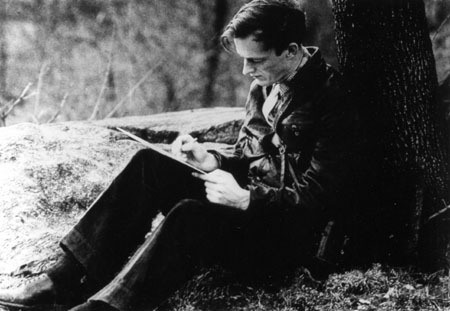
The other day I heard from a publicist who referred to me as someone who covers the "birding beat" and I was delighted by the reference. (She was talking about books I've reviewed at Bookslut and it was a pretty apt description.) I'm not the best sort of birdwatcher; I don't count and I'm lousy at identifying plumage or song. But I do love a good field guide and in fact we have several of them around the windows and we are constantly looking outside and using the binoculars. (The bird feeders bring them in by the tons in our backyard.)
Some of my favorite field guides are from Peterson's (I am a bit of a Roger Tory Peterson fangirl, thus the pic for this blog post). They have a new one coming out, Bird Homes and Habitats, that is kind of an anti-guide. It's not about identification of birds but rather of habitat and how to build homes to attract them. The editors visit with a ton of bird lovers who share their backyards. It's kind of an indepth guide version of a decor magazine, if that makes any sense. Not a how-to, not a crafty book, rather a very pretty, full color more informative backyard version of House & Garden.
Am I explaining this well?
The publisher refers to it as an inspiration guide and I think that's the ticket but it's not glossy, impossible, unattainable inspiration (not that there's anything wrong with that). This is inspiration for the rest of us, kind of like field guides make bird watching or rock hunting, informed star gazing possible for everyone.
Dare I say it - this is an empowering outdoor design book (!).
We should all have a stack of field guides in our houses and we should refer to them everyday. Maybe if we cared more about what was all around us, then we would work harder at taking care of it.
Consider that your public service message of the day. :)

August 16, 2013
Lizzie Skurnick Books Subscription Series is a very good idea
 Several folks tweeted about this PW interview with novelist Lois Duncan and the upcoming reissue of her classic Debutante Hill. (I found the link from Leila, of course, as she is always on everything cool.)
Several folks tweeted about this PW interview with novelist Lois Duncan and the upcoming reissue of her classic Debutante Hill. (I found the link from Leila, of course, as she is always on everything cool.)
Duncan's book is returning to the world via the efforts of Lizzie Skurnick and her imprint with IG Publishing. I am very impressed with the Fall 2013 List which includes reissues by Ernest Gaines, M.E. Kerr and Ellen Conford (that's the one I requested). I was even more delighted though to see that there is a reader subscription available that sounds like about the most fun kind of gift any teenage girl (or former teenage girl) could want.
(I realize that nostalgia is the big draw for many of these books and thus a lot of adults will be buying them but the stories are so good that I'm sure today's teens will find them very affecting as well.)
I will be including mention of the subscription service in my December column, (if this doesn't have holiday gift giving written all over it then I don't know what does), but couldn't sit on the news of it until then. Also, this was the perfect excuse to share the upcoming Spring 2014 list:
WRITTEN IN THE STARS, a collection of Lois Duncan's short stories; Ellen Conford's teenage psychic novel AND THIS IS LAURA; Sydney Taylor's MORE ALL-OF-A-KIND FAMILY and ALL-OF-A-KIND FAMILY UPTOWN; Norma Klein's DOMESTIC ARRANGEMENTS; Erich Kastner's LISA AND LOTTIE; and Brenda Wilkinson's LUDELL, the first of the LUDELL trilogy
(I'm trying really hard not to go all fifteen-year old screamy over this.)
Oh - and that book cover up top - the one for I'll Love You When You're More Like Me? Give that girl some longer redder hair and she is me circa summer 1983 (fourteen going on fifteen). I read a lot of M.E. Kerr back then; I needed her more than you can imagine.
Look at me - being all nostalgic. Surprise.

August 14, 2013
Getting a grip...
There was company over the past couple of weeks and many planned events and planning of events and a trip and meals (so many meals!) and, well, company stuff. It always upsets the careful apple cart when there are people to-ing and fro-ing about and in the midst of it there were articles to turn in, a project with terrifyingly close deadlines and the mechanics of the business my husband and I run which involves a lot of reading and editing contracts these days.
In all of this I have a felt a bit like I am losing my grip.
That is not a suggestions that I'm losing my mind, but my grip. I have a careful list of professional commitments on a daily basis --write for this, research that, review this, submit that--and when I fall behind on any of it the whole list starts starts to spin out of control. Today I began to write a new list and then quickly shook my head as it kept going and going and going.
I started doing laundry just so I could get some feeling of accomplishment. (The laundry needed doing anyway, so it wasn't a waste of time!)
The quickest thing was to review The Rocket Man by David Darling for Booklist so that was done. I have another book to finish reading and reviewing by the 20th (The XX Factor by Alison Wolf) and four (!) on deck by the 3rd. (I'm pretty much all about reading for Booklist over the next two weeks for obvious reasons.)
I also finished my September column (which has turned out to be historical fiction) and then set aside for the next day or so the books I'm ready to review for October. These two are In the Shadow of Blackbirds by Cat Winters (a surprise on so many levels, both creepy and smart and powerfully places readers in an overlooked period of history) and Queen Victoria's Book of Spells, edited by Ellen Datlow & Terri Windling (LOVED it - so many great stories here to write about!)
I'm currently reading two books for October - The Waking Dark by Robin Wasserman (barely started and it's already creepy as hell) and The Clockwork Scarab by Colleen Gleason (a couple of chapters in and enjoying the characters very much). This column must be written by September 20th. I would actually prefer it be done sooner so I can focus on November (nonfiction) and there is some major busy-ness at the end of the month that will slow me down so I know I can't dither now.
I will be at the Alaska Historical Society conference in Haines the last weekend in September to present on Jean Potter (author of the AK aviation classic The Flying North, originally published in 1945). (SOOO much to share on this!) (Soon, promise!) And then it is on to PNBA in Portland in early October because I am a small press publisher now and shall be letting the many wonderful Pacific NW Booksellers know all about that. (More soon, more soon....)
So yeah, no dithering over the next six weeks.
The other two books I hope to review this fall are Play Pretty Blues by Snowden Wright and Dwelling in Possibility by Howard Mansfield. Harper might be sending me another book on houses and living that is a potential fit for a dual review with the Mansfield - we'll see. But I'm aiming for November and December for submittals for these two, both to Bookslut. (These are very different books - a novel on Robert Johnson and a meditation on the concept of home and "the soul of shelter" but I'm loving them both - great books.)
So where was I?
Oh yes, losing my grip. I have four articles to write for Alaska Dispatch over the next couple of days (totally doable) and a couple of emails to get out on others as well as some research to do. I'm also waiting on a Probable Cause report from a 2011 crash for an article and a Preliminary Report for a second that I want to write about as well. I'm still finding my way at Dispatch - I feel sometimes like I need to write strictly as a journalist, others as a columnist or blogger and only a few times does the finished piece feel sincerely like "me". I have to remember how long it took for my Bookslut column to come together and be patient; nothing about good writing is ever easy.
And yeah, my writing. A scientist/mountaineer who died in 1932 and an aviator who died in 1929. Both of them mapped portions of Alaska, both of them live forever as names on modern maps. Neither of them has a grave as each was lost in the purest sense of the word. They are the framework for the mountain book; everything else comes from them. So I plug away at who they were and what they did. I just wish I had more time to be with them these days.
More than anything, those guys are why I really need to get a grip. I don't want to lose sight of them as I try to catch up with everything else.

Sara Ryan + graphic novel + coming-of-age set in Oregon = CAN'T WAIT TO READ IT!
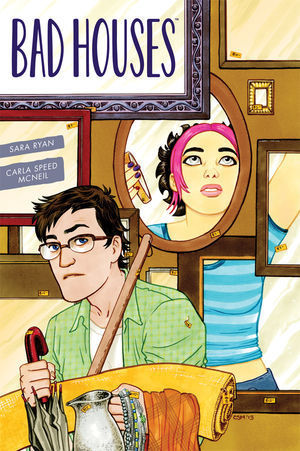 I had heard rumors earlier this year at ALA Midwinter about Sara Ryan's upcoming graphic novel from Dark Horse but I didn't press for more information because I didn't want to seem too fangirl scary. (It happens when dealing with a favorite author.) Imagine my delight then, when my stack of Previews arrived and I found Bad Houses scheduled for an October 30th release. Here's the description:
I had heard rumors earlier this year at ALA Midwinter about Sara Ryan's upcoming graphic novel from Dark Horse but I didn't press for more information because I didn't want to seem too fangirl scary. (It happens when dealing with a favorite author.) Imagine my delight then, when my stack of Previews arrived and I found Bad Houses scheduled for an October 30th release. Here's the description:
Lives intersect in the most unexpected ways when teenagers Anne and Lewis cross paths at an estate sale in sleepy Failin, Oregon. Failin was once a thriving logging community. Now the town's businesses are crumbling, its citizens bitter and disaffected. Anne and Lewis refuse to succumb to the fate of the older generation as they discover--together--the secrets of their hometown and their own families.
On her website, Sara describes it as: "My first graphic novel, Bad Houses, with art by Carla Speed McNeil, is about love, trust, hoarding, and dead people's stuff."
If you are familiar with Sara's previous work then you will be very excited about this one. If you aren't, then get over to her site, read about all her previous books and mini-comics and then you will be very excited about Bad Houses too.
Basically, Sara is one of the best there is at creating very human (as in no vampires), very believable (no "trying to get vampire to notice you" or "falling in love with vampire" or creating a "vampire/werewolf love triangle" plots), very smart (but not eye-rolling-this-is-what-an-adult-author-wishes-they-had-sounded-like-when-they-were-a-teenager fake kind of smart) and, most importantly, very compelling characters. She's the real deal and anything she puts out there is well worth your time.
Expect to hear more from me on Bad Houses after its release and look for a review in my column this winter.

July 29, 2013
Play Pretty Blues: A Novel of the Life of Robert Johnson
I am reading an amazing book - Play Pretty Blues by Snowden Wright. It's a novel about Blues great Robert Johnson told from the perspective of his primary wives/girlfriends who serve as a Greek Chorus of sorts and view his life from afar.
Johnson's life is as much myth and legend as fact (he was the musician who met the Devil at the Crossroads), and Wright works in and out of fact and fiction in this novel in a way that can only be considered musical in the best sort of the way. This is great writing, inventive and smart and incredibly engaging. I've been a Johnson fan forever so I'm the perfect audience for it, but anyone interested in southern writing or a novel steeped in music history will fall hard for it. I'll be reviewing this one down the line; I'll keep ya posted on that and my continued reading of it.
Here's a bit though to give you an idea of the language:
We have lived in the shadow of a ghost. In the first few years after his demise, some of us migrated north to St. Louis and Chicago, some of us west to Texas and Oklahoma, all in trace of the path taken by his posthumous musical influence. Claudette collected a dossier of evidence of his life and death, including fingerprints, oral accounts, facial sketches, Mason jars of sampled soil, photographs and lithographs and phonographs, vials, beakers, bottles, locks of hair hermetically sealed in Tupperware and Glad-Lock. Mary Sue, the oldest of us, seduced every headliner she heard cover a Robert Johnson song. Tabitha, the youngest, spent years harassing his murderer's family with coins glued to their porch's floorboards, caps twisted loose on their salt shakers, and staples removed from their Swingline. Betty sought solace in the bottle. Helena, who never forgave herself not not bearing our mutual husband an heir, eventually married a writer of crossword puzzles and gave birth to three boys named various anagrams of "Robert Johnson."

July 23, 2013
Edward Lear's birds, ghostly photos, Gaslamp fantasy & more
Still digging into Dwelling in Possibility by Howard Mansfield. In the current chapter he is writing about the destruction of dwellings during WWII - the dropping of massive bombs in Germany and England in an effort by each to uproot the others' civilization. "Dehousing", as we know, did not work - the civilians on both sides only dug in deeper. What's so fascinating (in the darkest way), is that they knew it wasn't working against themselves but thought they would be successful doing it against the enemy. If this isn't an example of war's insanity, I don't know what is.
I'm loving this book - from clutter to bombing, he is making me think so much.
What Do You Buy the Children of the Terrorist Who Tried to Kill Your Wife? A Memoir of Jerusalem by David Harris-Gershon. This is for Booklist, written by an American who was in Jerusalem as a grad student with his wife when she was the victim of terrorism. It is as much about writing as survival; an unexpected book.
In the Shadow of Blackbirds by Cat Winters. This one deals with WWI, the flu epidemic and spirit photography. It's for the October column and appropriately spooky although far deeper and more thoughtful than I expected and a lot more about the impact of war and plague then romance (though there is a love story here). I'm always happy to be surprised while reading.
Queen Victoria's Book of Spells: An Anthology of Gaslamp Fantasy ed by Ellen Datlow and Terri Windling. Also for the October column, I'm a few stories in and already overwhelmed by the sheer joy of this collection. Holy cow - it's fantastic. Contributors include Elizabeth Bear, Jeffrey Ford, Delia Sherman, Kathe Koja, Gregory Maguire...you get the idea. This one is pure reading candy.
What I'm Reviewing:
Edward Lear's Nonsense Birds & Advice to Little Girls by Mark Twain in two darling new reprints from the Bodleian Library and Enchanted Lion Books. Consider them picture books for hipsters - but in a good way. I'm liking different these days; I'm longing for different. These are different and good and that is a good thing.
What I'm Writing:
An article about the recovery of a B25 from a sandbar in the Alaskan Interior. This is an update; they got the wreckage last month and shipped it out to Michigan. Eventually it will be rebuilt and serve as the cornerstone of an aviation museum there.
Also, I'm waiting on the release of a Probable Cause report from the NTSB for an accident that occurred two years ago (that's how long these things can take). It's due any day now and I want to write something up on that. And a destination piece about flying to one of the most remote national parks in the country. (Because if you can, shouldn't you?)
For my book, it is men you've never heard of and places you've never been. I feel like I'm in the deepest dark heart of outer space on this one. I don't know if anyone will care about it, but I just keep plugging along.

July 22, 2013
On Whitney Otto - "... isn't every generation following any war a little lost?"
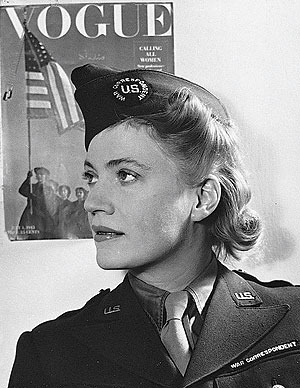 I recently finished Whitney Otto's Eight Girls Taking Pictures and found it a very interesting read. Some of the characters were more compelling to me than others but that's just personal preference; overall I thought it was really quite good and if you like quiet historical fiction about women then I recommend it. There were several passages that especially stayed with me.
I recently finished Whitney Otto's Eight Girls Taking Pictures and found it a very interesting read. Some of the characters were more compelling to me than others but that's just personal preference; overall I thought it was really quite good and if you like quiet historical fiction about women then I recommend it. There were several passages that especially stayed with me.
From the first chapter, detailing the life of a woman in the early 20th century:
Cymbeline had learned from an early age that money buys things that people with money never even realize they've bought, like time and freedom. Because their privilege came to them so naturally, it was unimaginable that others didn't have it too; that is to say, if others didn't have it, perhaps that was because it would be wasted on them, the rich always seeming to believe themselves meant for better things.
That one really made me think a lot about my great grandmother who was a factory girl in 1910 and no matter how hard she (and her husband) worked, getting out of poverty was never more than a dream for the next generation; it could not happen for her.
I have often wondered about the women who wore the clothes she and her friends worked so hard to make and if those women thought of her (and those like her) at all. It makes the factory workers of Bangladesh that much more real to me.
From a chapter set during WWI:
No one really survived the Great War. No person, no place. It was too far-reaching, too catastrophic, too unimaginable. Those who made it home weren't the same, and those who waited at home were also changed. Everyone became a stranger of the most dislocating sort because everyone became, once again, unknown. Unknown yet looking familiar, everyone resembling someone he or she used to know. Sweethearts, young marrieds, parents and children, children and parents all had to relearn each other. This didn't even take into account those who returned yet never seemed to come back at all. Gertrude Stein coined the the expression "a lost generation," but isn't every generation following any war a little lost?
See the War/Photography exhibit for how little that post-war "lost generation" has changed in the last century.
And then there is this for a chapter set in Germany during the lead-up to WWII:
They knew that even the most neutral neighbors would be tempted to take what they had not even thought to covet until recent events had made them understand that possession was nine-tenths of a law that favored them. It was not uncommon for someone to show interest in your jewelry , your home, your job, your painting, maybe even your wife - it was as if the temptation was too much, the possibilities of possession too great to pass up. If you were Jewish, you began to spend all your time trying to go unnoticed. Or making your winter coat go unnoticed. Or your car, your garden. It was nearly impossible to have things and hide them at the same time. How could anyone fight was a Jew now represented to many Germans? It was if they were walking catalogs of splendid goods and real estate and business and career openings.
That passage makes what was happening to Jews before the war all the more terrifying to me. That your neighbors - people who had known you for years - could just so easily decide that they could go "shopping" in your life, your home. That they felt entitled and empowered to do so. Well, it makes you wonder just what humanity is, really, and why on earth it is always so easy for us to be cruel to each other.
[Post pic of Lee Miller, one of the inspirations for Otto's characters.]

July 17, 2013
The nature of home, the Boxer Rebellion, evil obsessive egg collectors & more
What I'm Reading:
Women of the Four Winds by Elizabeth Fagg Olds. I'm up to the fourth woman discussed in the book, Greenland explorer and American heiress, Louise Arner Boyd. Overall I've enjoyed reading about these women - I'd never heard of any of them before - and Boyd is a real character.
Eight Girls Taking Pictures by Whitney Otto. I'm conflicted on this one. Some of the chapters I've enjoyed a great deal whereas others really drag (to me anyway). But I'm still reading so that's something! ha!
Dwelling in Possibility by Howard Mansfield. Just started to read it for review - it's due out in September so I'll be writing about it formally this fall. The short reaction is that I love it. Mansfield is one America's most thoughtful writers (check out his stuff in
What I'm Reviewing:
Boxers & Saints (2 volumes) by Gene Luen Yang. A two volume novel set during the Boxer Rebellion told from the Christian and "Boxer" positions (as portrayed by two young people) is....well it's pretty freaking amazing! I can't believe Yang decided to do this or that First Second embraced it. So much Chinese history is utterly unknown to westerners and the Boxer Rebellion is huge in how modern China developed so wow - delighted to see these books!
But....well, hardly anyone knows anything about the Boxer Rebellion and that makes these two books a bit difficult to follow. Joan of Arc appears to the young Christian but unless you are familiar with her story (and how it ends), you will likely be confused a bit. Ditto the figures from Chinese history who appear for the young Boxer and even more so, the whole history of western involvement in Chinese affairs which came to a boiling point in this period. The books really really needed an author's note, probably more than any book I've read in a while. While there is a brief list of books for more reading, it's not enough. I taught history and I had questions; I can't help but think most teenagers will as well.
(See more here on the destruction of countless rare books at the Siege of Peking.)
The Silence Of Our Friends by Mark Long & Jim Demonakos. Also for the September column, this gn is about racism in Houston in the 1960s and the protagonist's father who is a white reporter assigned to cover the Civil Rights Movement. From the Afterword it is heavily based on author Mark Long's childhood and he explains the real court case that lies at the climax of the novel.
I thought it was a good book and really appreciated that explanatory note (as it makes clear that the court case was based in truth), but it seemed like in order to fit in everything he wanted that the story jumped around a bit and small events are brought in and not developed. It's just seemed a bit uneven but I still think a very worthwhile read.
And Then There's This:
This is as infuriating as it is fascinating: The New Yorker on obsessive collectors of rare and endangered bird eggs. Idiots.
Author Bennett Madison talks to "The Rejectionist" about not writing one book and turning instead to another. Plus mermaids, sex from a teenage boy's perspective, the Melendy Quartet, his parents concern that he was having a moment from "The Shining" (uh oh) and lots of other writerly goodness that should not be missed.

July 15, 2013
Catalogging Coffee House Press Fall/Winter 2013
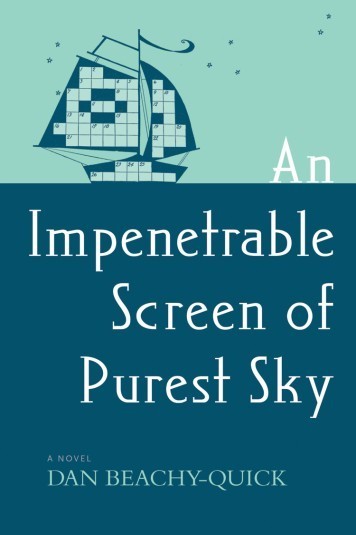 Not to be outdone by all the Consortium Books wonderfulness I've been spreading the word on, the Coffee House Press catalog arrived last week and several titles there jumped out at me. Here they are, with publisher descriptions:
Not to be outdone by all the Consortium Books wonderfulness I've been spreading the word on, the Coffee House Press catalog arrived last week and several titles there jumped out at me. Here they are, with publisher descriptions:
An Impenetrable Screen of Purest Sky by Dan Beachy-Quick. Daniel is pursued by stories. his father, in thrall to a myth, has disappeared; his mother and sister, too; and Lydia, his lover, leaves him and the novel he cannot finish for quantum mechanics, the place where theory tells tales about the real. And then there is Pearl, the girl beneath the floorboards, whose adventures hum alongside Daniel's own.
In this contemporary, contemplative fairy tale, the autobiographical novel takes on the cast of legend, and the uncertainty of memory leaves reality on shaky ground. Can parallel universes exist? Can a preoccupation with Moby Dick overwhelm the story unfolding before you? Where do you stand in relation to the metaphysics of your own life?
Dan Beachy-Quick has a fascination for whales and whaling (he wrote The Whaler's Dictionary) and while I am not a huge fan of Moby Dick, I am fascinated by the topic and intrigued by his blending of folk lore here. This new book almost sounds a bit like Ekaterina Sedia (who blended fairy tale and horseshoe crabs in The House of Discarded Dreams). Certainly worth a look.....
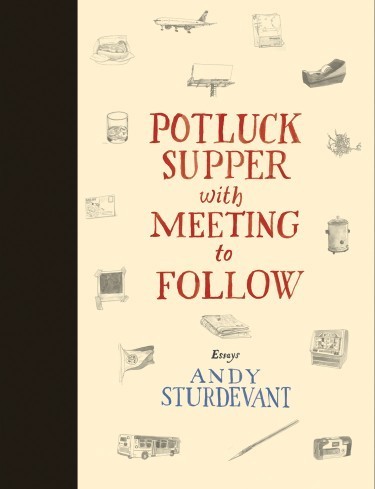 Potluck Supper with Meeting to Follow (essays) by Andy Sturdevant. Keepsake, guidebook, and wunderkammer of enthusiasms, Sturdevant's essays offer a new ay of thinking about urban spaces and the contemporary Midwest. Craigslist ads, homemade signs at Target Field and alleyways all open up with possibilities for measuring cultural time and the resonance, not provincialism, of spaces closely observed. Published to coincide with Sturdevant's solo show at the Minneapolis Institute of Arts, Potluck Supper with Meeting to Follow reveals the essayist as pied piper and artist, whose canvas is the city.
Potluck Supper with Meeting to Follow (essays) by Andy Sturdevant. Keepsake, guidebook, and wunderkammer of enthusiasms, Sturdevant's essays offer a new ay of thinking about urban spaces and the contemporary Midwest. Craigslist ads, homemade signs at Target Field and alleyways all open up with possibilities for measuring cultural time and the resonance, not provincialism, of spaces closely observed. Published to coincide with Sturdevant's solo show at the Minneapolis Institute of Arts, Potluck Supper with Meeting to Follow reveals the essayist as pied piper and artist, whose canvas is the city.
Just so much of this sounds excellent - the potluck suppers, the look at the contemporary Midwest (so often referred to as "flyover country" and i hate that); just the notion of an "investigation" of modern life in the midst of the country that is not about politics but culture, about how people live. I can't get enough of understanding who we are and how we come to be ourselves.
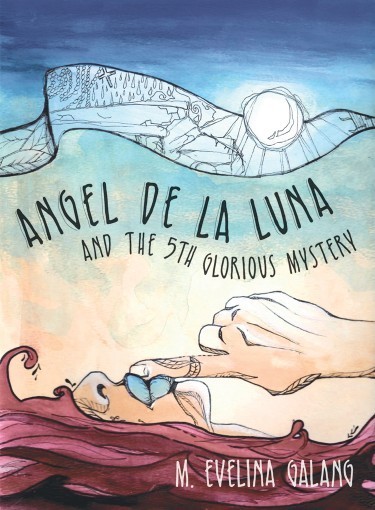 Angel de la Luna and the 5th Glorious Mystery by M. Evelina Galang. Angel has just lost her father, and her mother's grief means she might as well be gone too. She's got a sister and a grandmother to look out for, and a burgeoning consciousness of the unfairness of the world-in her family, her community and her country.
Angel de la Luna and the 5th Glorious Mystery by M. Evelina Galang. Angel has just lost her father, and her mother's grief means she might as well be gone too. She's got a sister and a grandmother to look out for, and a burgeoning consciousness of the unfairness of the world-in her family, her community and her country.
Set against the backdrop of the 1986 Philippine People Power Revolution, the struggles of surviving Filipina "Comfort Women" of WWII in the early 1990s, and a cold winter's season in the city of Chicago, Angel de la Luna is the story of a daughter coming of age, coming to forgiveness, and learning to move past the chaos of grief to survive.
WWII Filipina Comfort Women in a novel for teens - I can't imagine passing this one by.





